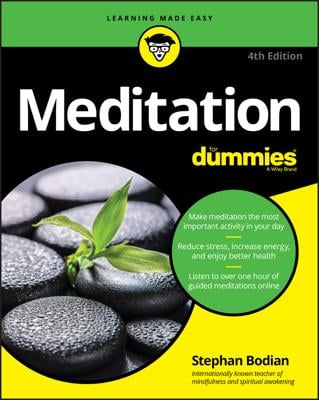Your early experiences have a big impact on your attitudes and ways of coping later in life. By learning to see that a negative experience is just a momentary thing rather than something that lasts forever, you can begin to move forward.
Meditation is similar. If you happen to get lucky and have a few positive experiences to start with, you’ll stick to it. But if you don’t, please don’t give up. Stay with it and work through any negative experiences you encounter.
Physical discomfort during meditation
In the beginning, sitting meditation will probably be uncomfortable. Learning to cope with that discomfort is an important hurdle to jump in your meditation adventure. When the muscles in your body get used to sitting meditation, the discomfort will probably diminish.To reduce physical discomfort when meditating, here are several things you can try:
-
Sitting on a cushion on the floor:
-
Experiment with using cushions of different sizes.
-
Slowly and mindfully stand up, stretch with awareness, and sit back down.
-
-
Sitting on a chair:
-
Try raising the back two legs of the chair using blocks, and see if that helps.
-
You may be sitting at an angle. Gently lean forwards and backwards and to the left and right to find the middle point.
-
Ask a friend to look at your posture to check that you look straight.
-
Ensure that you’re sitting with a sense of dignity and uprightness but not straining too much.
-
Get over difficult emotions for mindfulness
Many people come to mindfulness with difficult emotions. They suffer from depression, anxiety, or are stressed at work. They’re trying to cope with anger, lack of confidence, or are ‘burnt out’. Often they feel as if they’ve been fighting their emotions all their lives. Mindfulness is the final resort – the answer to coping with their difficulties. What mindfulness asks of people is both very simple and very challenging.The next time you’re faced with difficult emotions, whether you’re meditating or not, try the following exercise:
-
Sit with your back straight but not straining.
-
Feel the emotion present in the here and now.
-
Label the emotion in your mind, and repeat it.
-
Notice the desire to get rid of the emotion, and as far as you can, gently be with it.
-
Be mindful of where you feel the emotion in your body.
-
Observe the thoughts running through the mind.
-
Breathe into the emotion, allowing your breathing to help you observe what you’re feeling with warmth and friendliness.
-
Become aware of the effect of this exercise on the emotion for a few moments.
Accept your mindfulness progress
Mindfulness meditation is a long-term process – the more time and right effort you put in, the more you get out of it. Mindfulness isn’t just a set technique that you do to see what you get immediately – it’s a way of living. Be as patient as you can. Keep practicing, little and often, and see what happens.Be patient about your progress. You can’t see a plant growing if you watch it, even though it’s actually growing all the time. Every time you practice meditation you’re growing more mindful, though it may seem very difficult to see from day to day. Trust in the process and enjoy watering your seed of mindfulness.
Go beyond unhelpful thoughts for mindfulness
Negative attitudes are unhelpful because they make you feel as if you won’t be able to meditate, no matter what.Here are some common thoughts with useful antidotes to remember:
-
‘I can’t stop my thoughts.’ Mindfulness meditation isn’t about stopping your thoughts. It’s about becoming aware of them from a detached perspective.
-
‘I can’t sit still.’ How long can you sit still for? A minute? Ten seconds? Take small steps and gradually build up your practice. Alternatively, try moving meditations.
-
‘I don’t have the patience.’ Then meditation is perfect for you! Patience is something you can build up step by step too. Start with short meditations and increase them to increase your patience.
-
‘It’s not for me.’ How do you know that if you haven’t tried meditating? Commit to practicing for several weeks or a few months before deciding whether mindfulness meditation is suitable for you.
-
‘This isn’t helping me.’ This is a common thought in meditation. If you think this, just make a mental note and gently guide your attention back to your breathing.
-
‘This is a waste of time.’ Thousands of scientific studies and millions of practitioners are unlikely to be wrong. Mindfulness meditation is beneficial if you stick to it.

